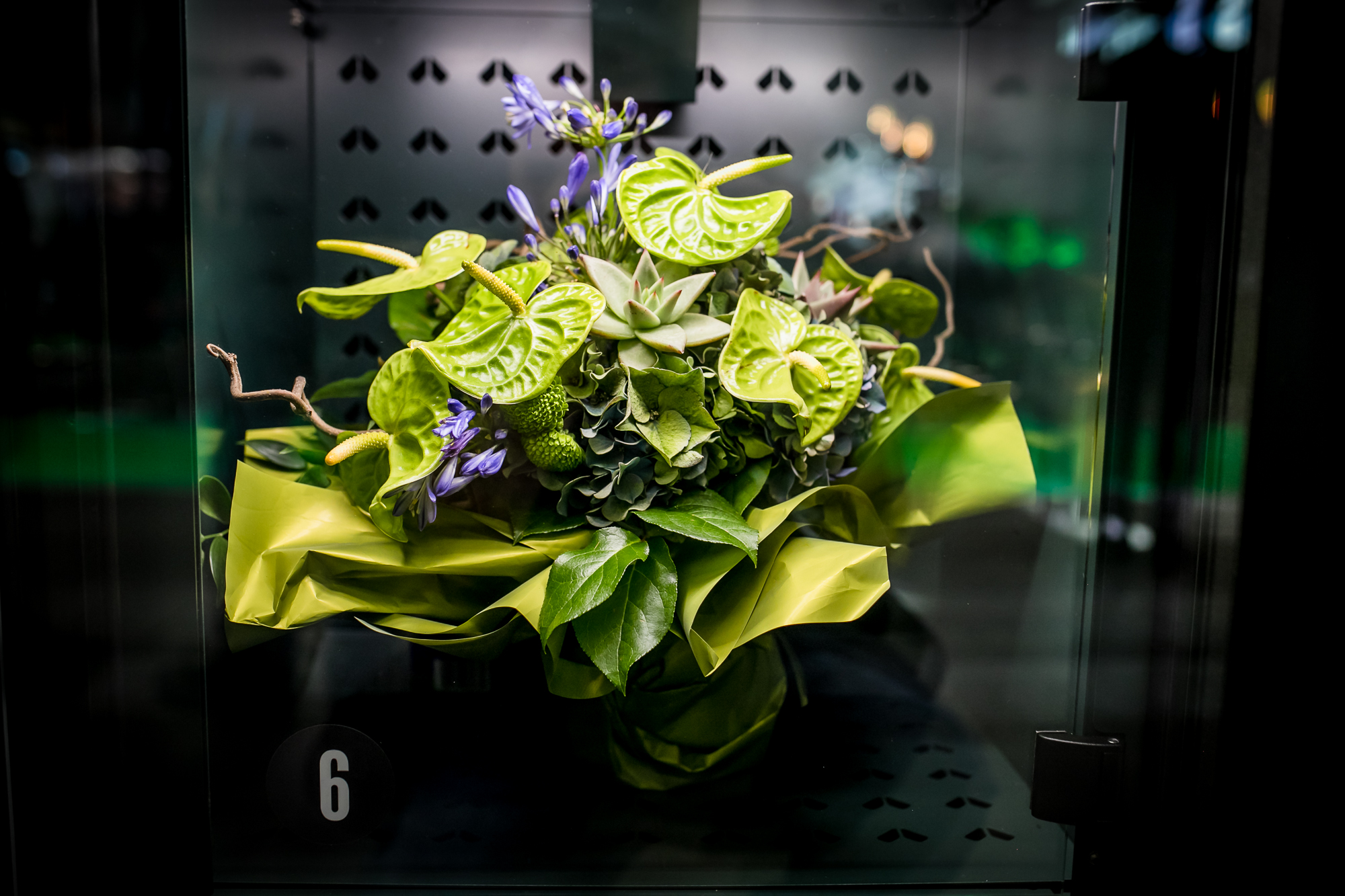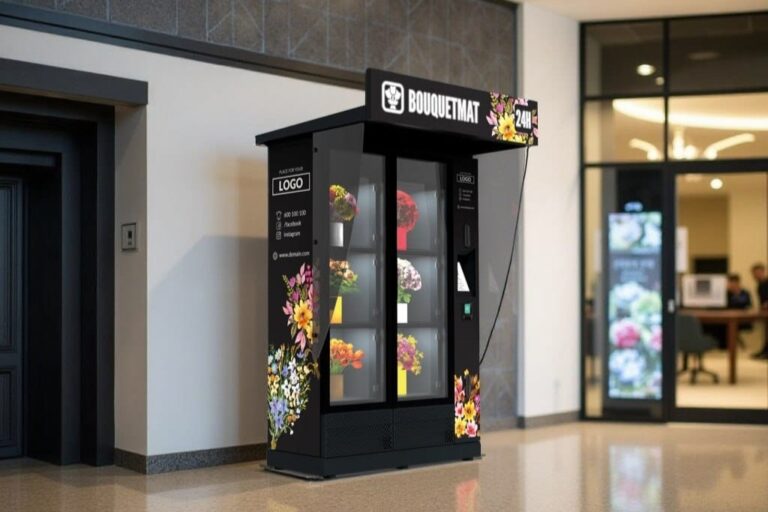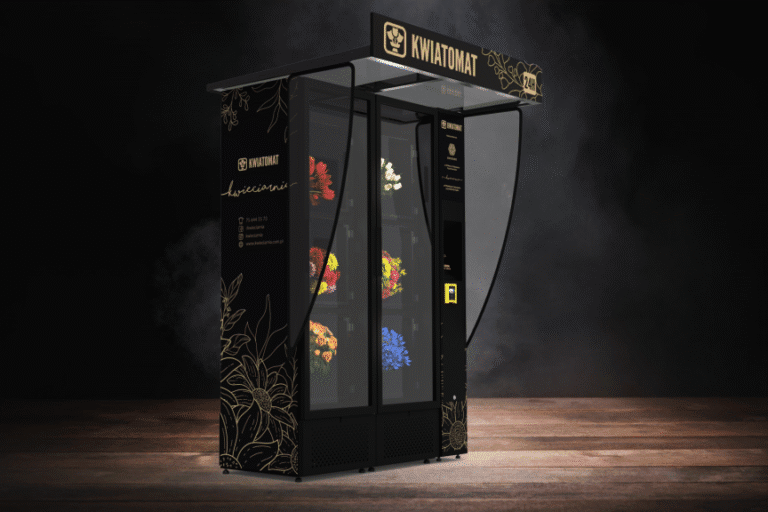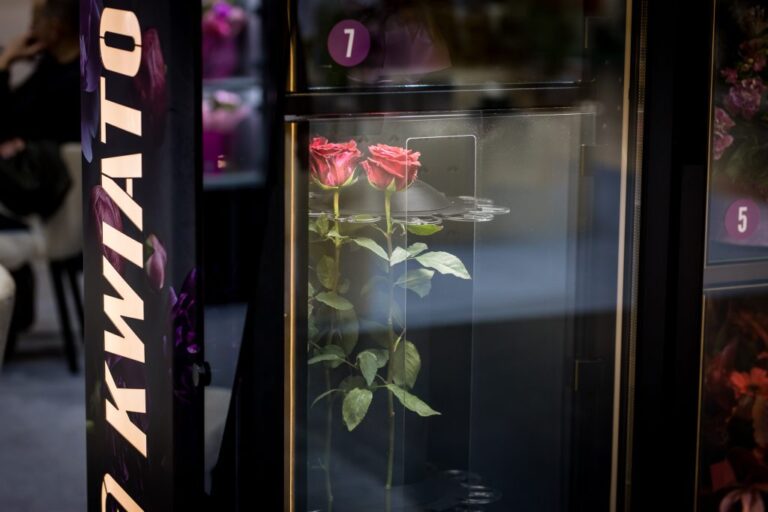How to increase sales in BouquetMat?
The art of displaying bouquets according to visual merchandising principles
The modern customer is more and more likely to make purchasing decisions with their eyes – what looks attractive goes into the shopping basket quicker. In the case of flower vending machines, where there is no salesperson, the bouquet display acts as a silent advisor. This is what determines whether someone reaches for the bouquet or walks away. It is therefore worth understanding how visual merchandising works and how to use it to maximise sales.
What is visual merchandising?
Visual merchandising is the art of visually managing a sales space – arranging products in such a way that they are eye-catching, easily readable and encourage purchase. In the case of BouquetMat, it is about the appropriate arrangement of bouquets in boxes, taking into account their colours, type of flowers, price and seasonality. All this should create a coherent, aesthetically pleasing image that draws the eye and facilitates choice.
Rules for displaying bouquets in the BouquetMat
1. The price pyramid arrangement
Place the cheaper bouquets in the lower boxes, the mid-priced ones in the middle and the most expensive ones at the top. This arrangement creates a visual pyramid that leads the customer’s eye upwards, building an impression of value and variety.
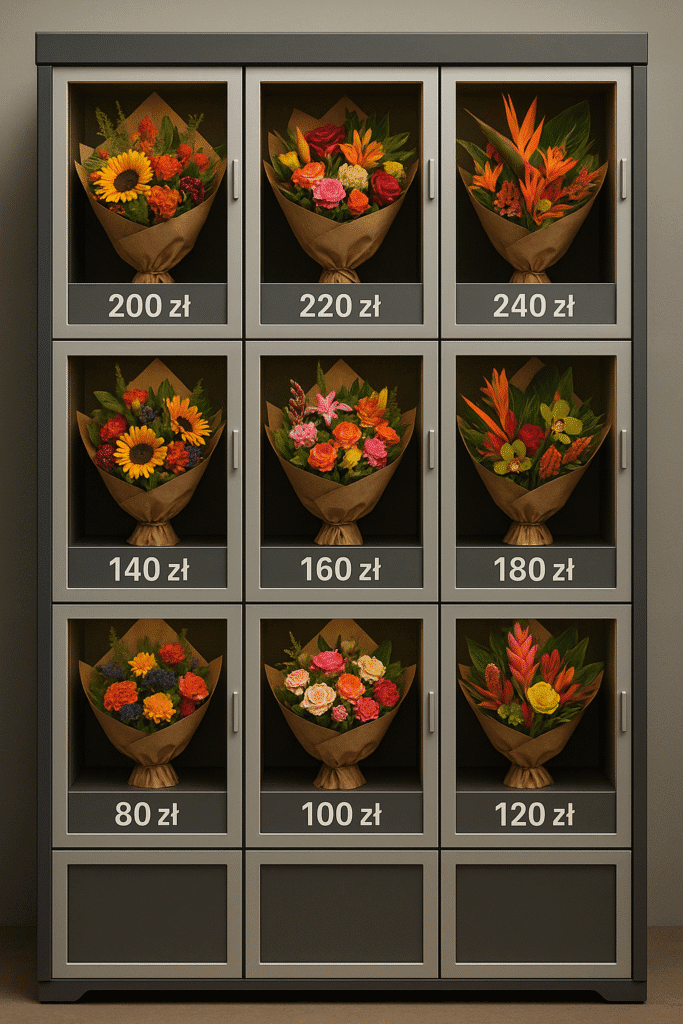
2. Colour harmony
Bouquets should be arranged according to a smooth transition of colours – e.g. from the lightest at the top to the darkest at the bottom. This makes the whole look aesthetically pleasing and professional, and makes it easier for the customer to spot the desired bouquet.
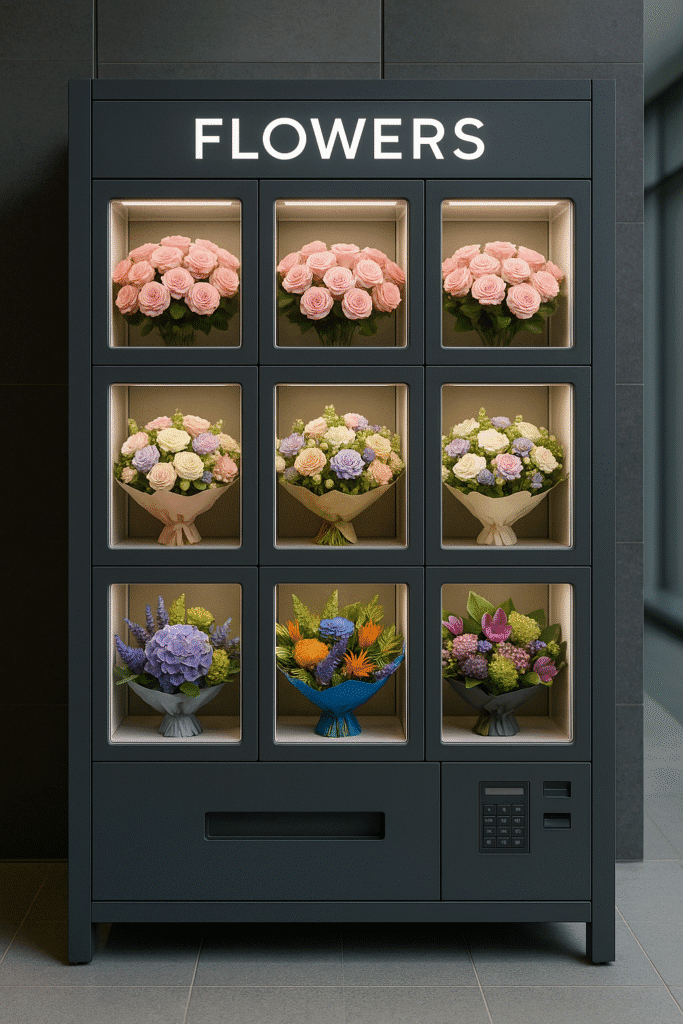
3. Seasonality and themes
In the upper boxes, display seasonal bouquets – for example with tulips in spring or sunflowers in summer. The lower boxes can contain year-round, more classic and versatile bouquets.
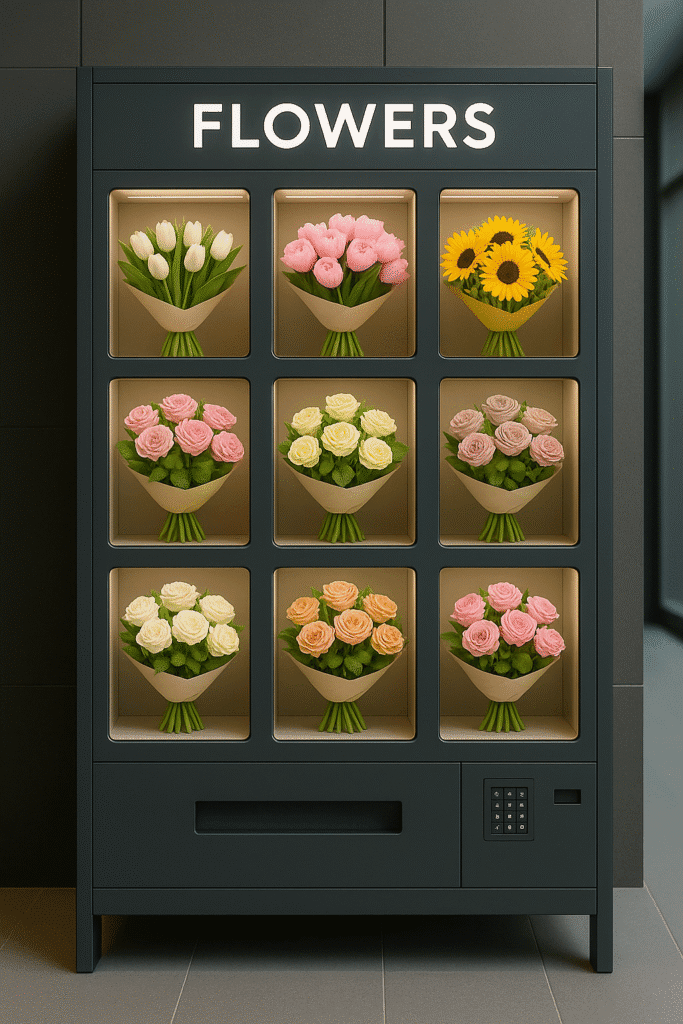
4. Grouping by flower type
To make it easier to choose, divide the display thematically – place bouquets of roses on the left, mixed flowers in the middle column and more exotic flowers on the right. The customer will find something up to their liking quicker.
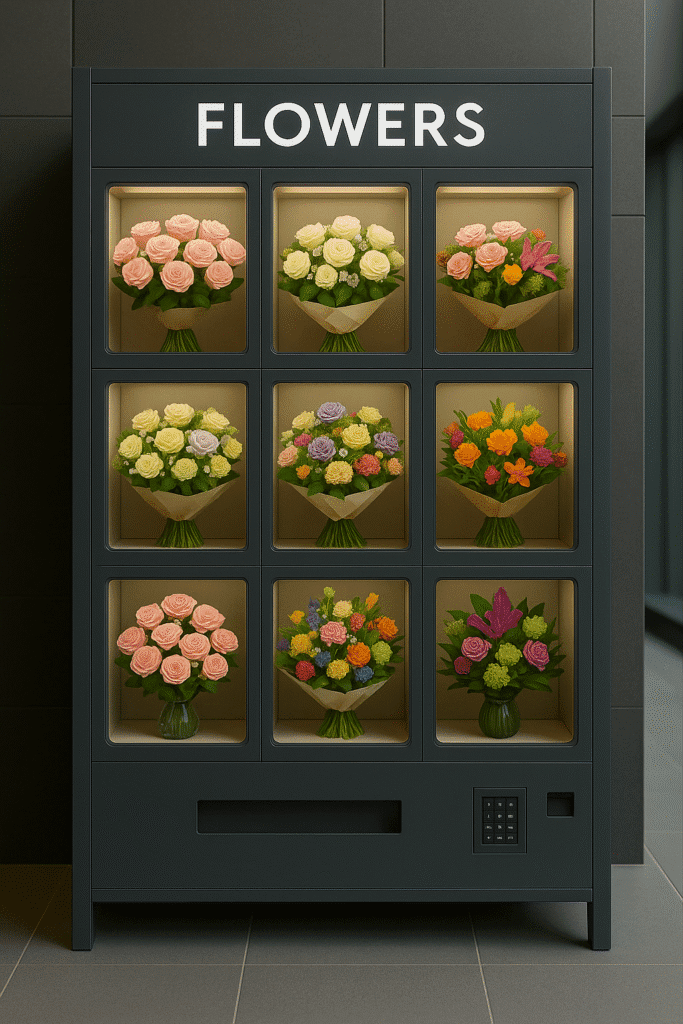
5. The visual triangle principle
Place the most striking and eye-catching bouquets centrally, creating a triangle-like arrangement: the top in the central upper box, the base in the lowest boxes. This arrangement naturally focuses the eye and directs attention to the key products.
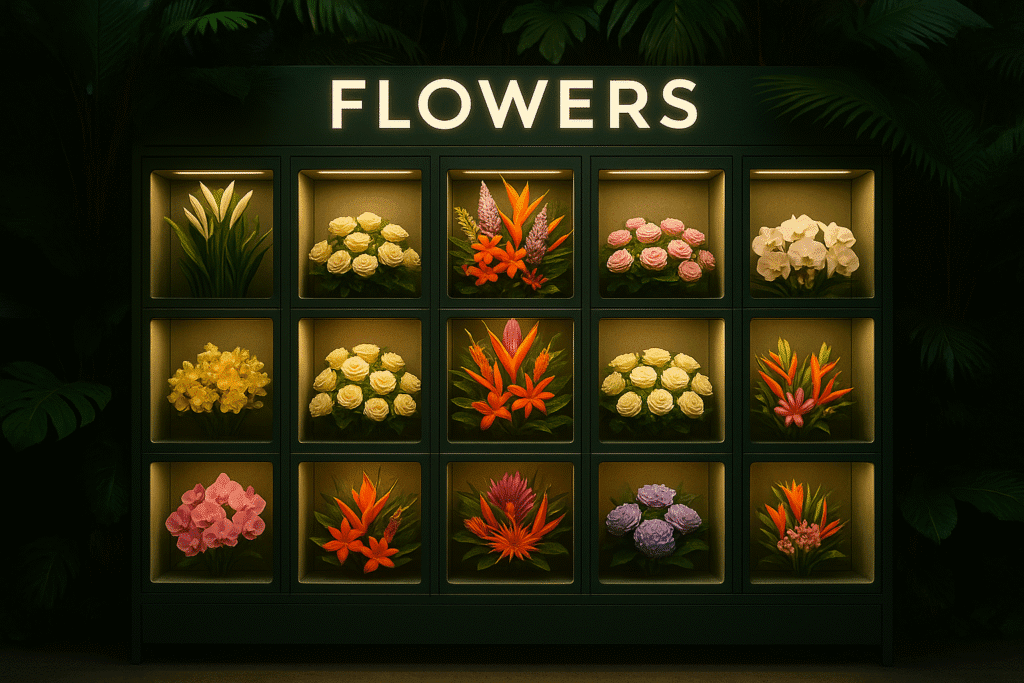
6. Assortment rotation
Even the most beautiful bouquets can become boring to regular customers. That is why it is worth regularly changing their arrangement, colours and composition in order to maintain the effect of freshness and surprise. To do this, it is worth using two innovative functions available exclusively in our BouquetMats:
- Countdown timer of bouquets in boxes – the system monitors how many hours each bouquet stays in the box. This allows you to precisely control the freshness of the flowers and plan their rotation, ensuring the highest quality for your customers.
- Box swap function – a unique solution that automatically transfers bouquet prices and display times between swapped boxes. This tool, available free of charge in each of our BouquetMat, allows bouquets to be freely rearranged at any time to instantly match the visual layout to the current assortment. This allows the operator to achieve a perfectly coherent and aesthetically pleasing composition of the entire display.
These functions are not just about convenience and saving time – they are real tools to support sales and the image of the modern, automated flower shop.
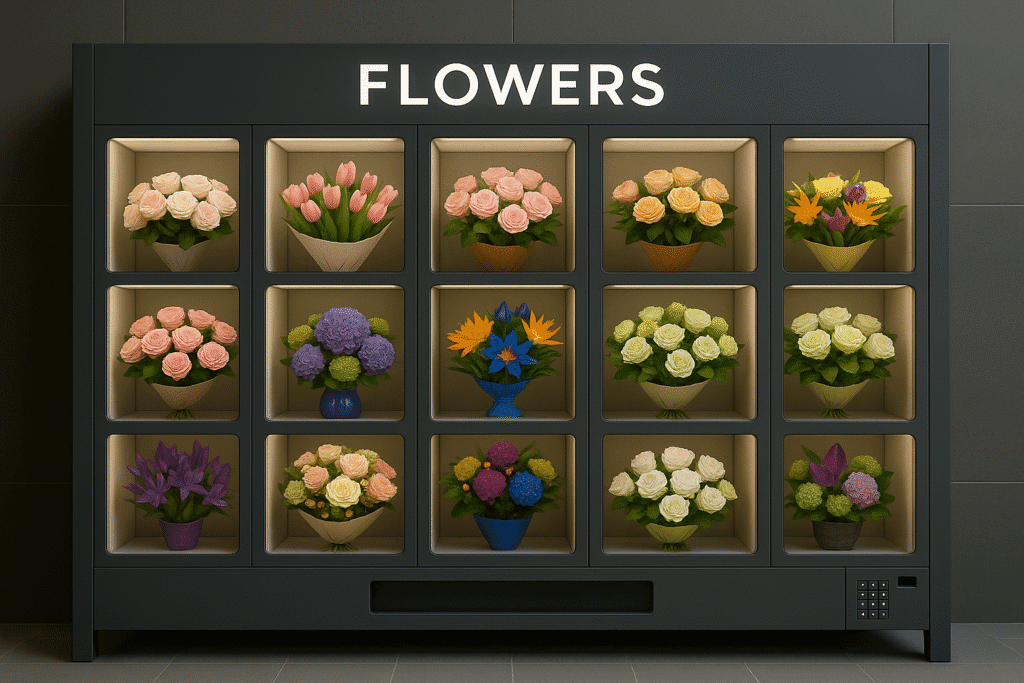
Summary
Visual merchandising in BouquetMat is not just a matter of aesthetics – it is a real sales tool. Professional display not only helps to increase the number of transactions, but also builds a positive brand image. A customer who sees a well-cared-for, aesthetically pleasing offer is more likely to return – even if the purchase was made fully automatically.
